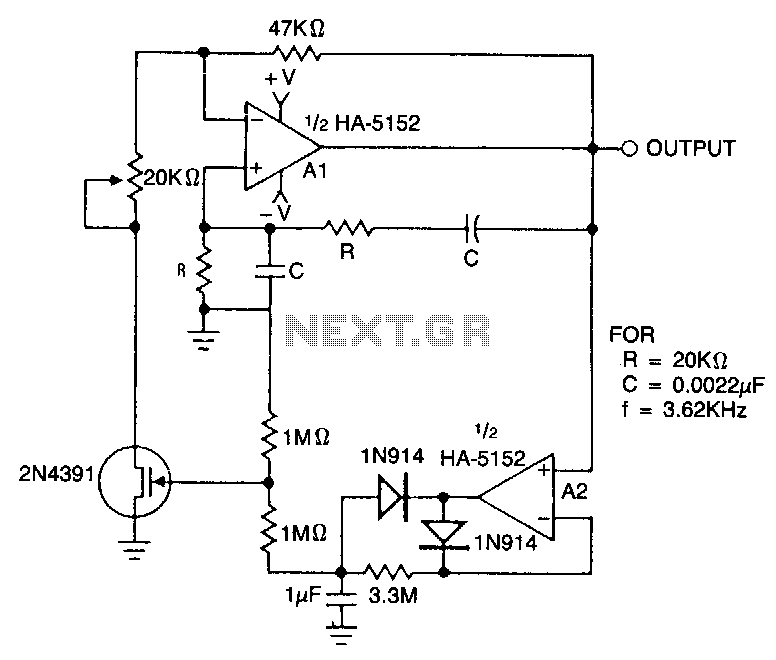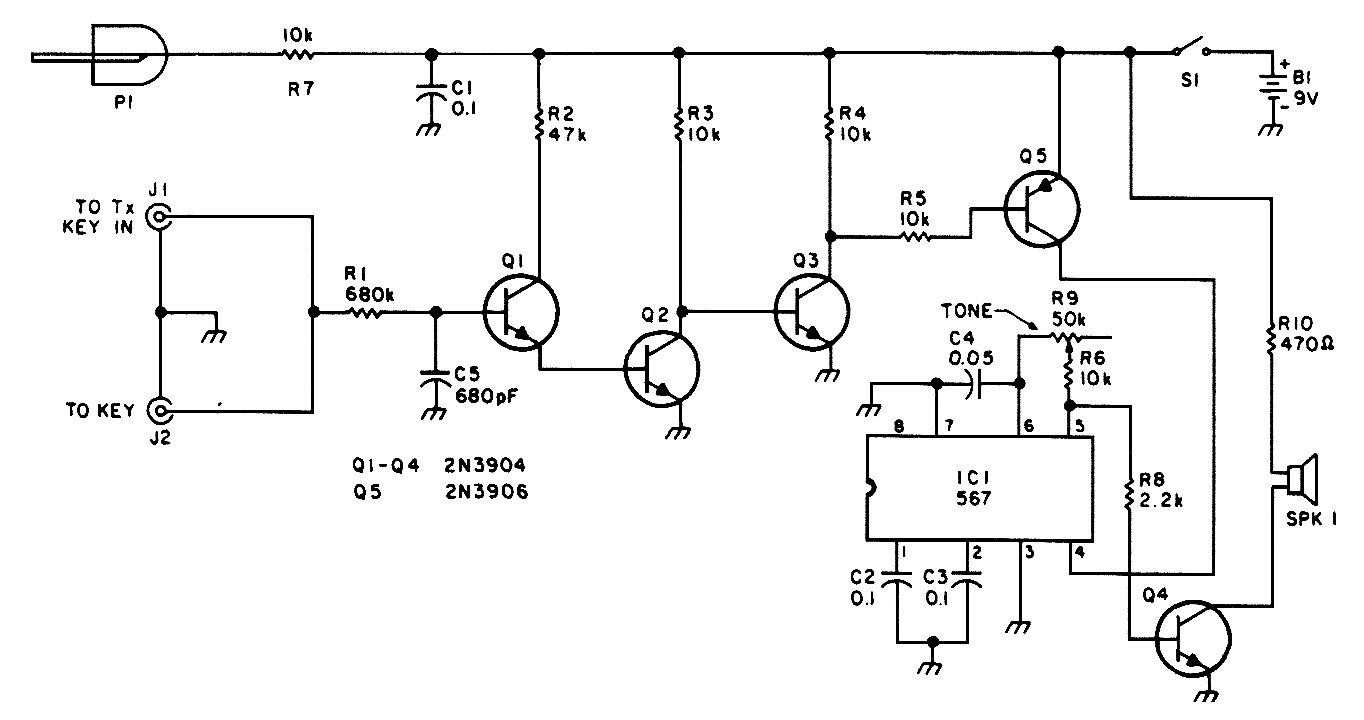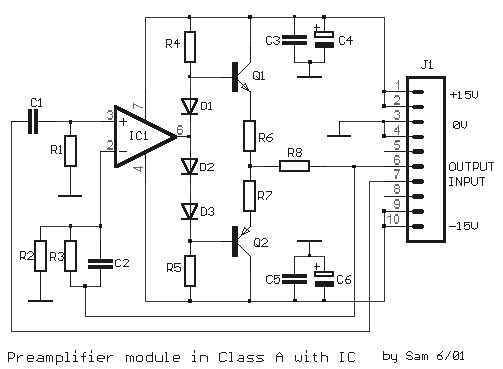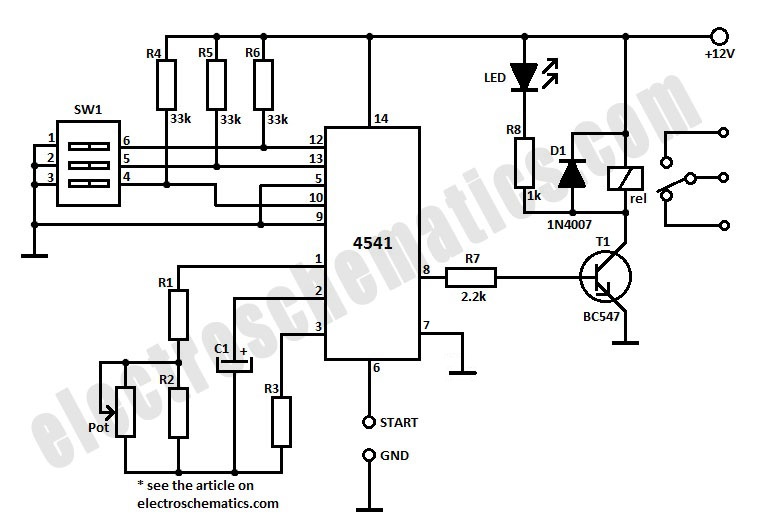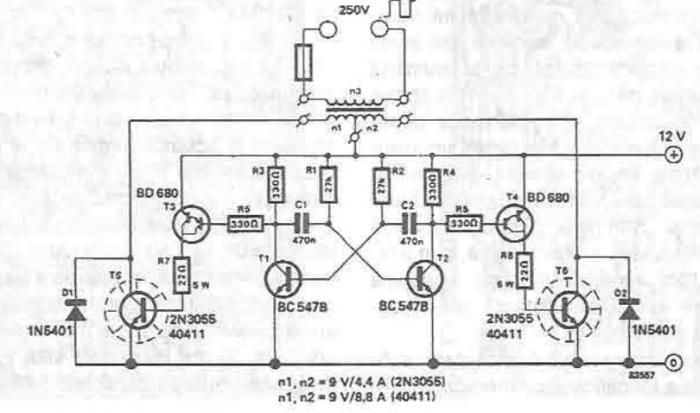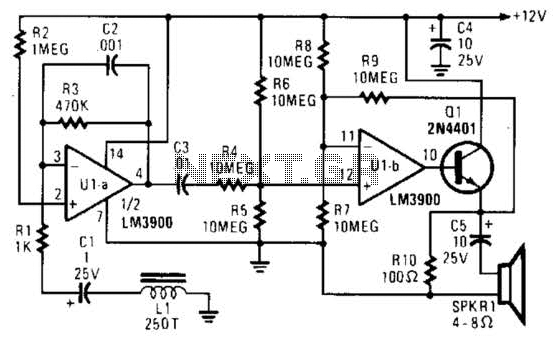
colpitts crystal oscillator circuit

This design schematic illustrates a Crystal Colpitts oscillator that can be implemented using a transistor and a parallel mode crystal. In this circuit, the crystal functions as an inductance. A large value capacitive divider is utilized between the gate, source, and ground, while a small series capacitor is incorporated within the crystal circuit. It is essential to select component values such that the ratio of C2 + C3 to C1 achieves the highest possible value, typically within a range of 5 to 10 to 1. The schematic presents typical values for these components. This circuit introduces minimal loading on the crystal. The relatively high values of C2 and C3 mitigate variations and drift caused by fluctuations in device characteristics. Frequency can be fine-tuned using C1, resulting in a clean sine wave at the emitter of the transistor.
The Crystal Colpitts oscillator is a popular choice in various electronic applications due to its stability and simplicity. The configuration primarily consists of a transistor, which serves as the active component, and a crystal that provides the necessary frequency stability. The use of a parallel mode crystal is critical, as it allows the circuit to leverage the crystal's resonance properties effectively.
In the schematic, the transistor is configured in a common-emitter arrangement, where the input signal is applied to the base terminal. The crystal is connected in parallel with the capacitors C2 and C3, which form a capacitive divider. This setup not only determines the oscillation frequency but also influences the overall gain of the circuit. The choice of the capacitors is crucial, as the ratio of C2 + C3 to C1 must be optimized to achieve the desired oscillation characteristics. A ratio of 5 to 10 to 1 is commonly employed to ensure a stable oscillation while minimizing loading effects on the crystal.
The capacitors C2 and C3 are selected to be of relatively high value, which helps to swamp out variations and drift that may arise from changes in transistor characteristics or temperature fluctuations. This design consideration is vital for maintaining the oscillator's performance over varying operating conditions. The capacitor C1, on the other hand, is used for fine-tuning the frequency of oscillation, allowing for precise adjustments to be made without significantly impacting the overall circuit stability.
The output of the oscillator is taken from the emitter of the transistor, where a clean sine wave can be observed. This output can be utilized in various applications, including signal generation, clock pulses for digital circuits, or as a reference frequency for other systems. Proper layout and component selection are essential to ensure that the oscillator operates efficiently and reliably, making the Crystal Colpitts oscillator a versatile and effective solution in electronic design.This is a design schematic of a Crystal Colpitts oscillator can be implemented using a transistor and a parallel mode crystal. This is the figure of the circuit. In this circuit, the crystal is use as an inductance. A large value capacitive divider is used between gate, source, and ground, and a small series capacitor is placed in the crystal circ
uit. You should choose the components values so that C2+C3 to C1 ratio has the highest possible value. The ratio of 5 to 10 to 1 is usually used. The schematic shows the typical values. This circuit introduce is a little loading on the crystal. The relatively high value is of C2 and C3 swamp out variations and drift caused by variations in device characteristics. Frequency can be fine tuned with C1. A clean enough sine wave appears at the emitter of the transistor. 🔗 External reference
The Crystal Colpitts oscillator is a popular choice in various electronic applications due to its stability and simplicity. The configuration primarily consists of a transistor, which serves as the active component, and a crystal that provides the necessary frequency stability. The use of a parallel mode crystal is critical, as it allows the circuit to leverage the crystal's resonance properties effectively.
In the schematic, the transistor is configured in a common-emitter arrangement, where the input signal is applied to the base terminal. The crystal is connected in parallel with the capacitors C2 and C3, which form a capacitive divider. This setup not only determines the oscillation frequency but also influences the overall gain of the circuit. The choice of the capacitors is crucial, as the ratio of C2 + C3 to C1 must be optimized to achieve the desired oscillation characteristics. A ratio of 5 to 10 to 1 is commonly employed to ensure a stable oscillation while minimizing loading effects on the crystal.
The capacitors C2 and C3 are selected to be of relatively high value, which helps to swamp out variations and drift that may arise from changes in transistor characteristics or temperature fluctuations. This design consideration is vital for maintaining the oscillator's performance over varying operating conditions. The capacitor C1, on the other hand, is used for fine-tuning the frequency of oscillation, allowing for precise adjustments to be made without significantly impacting the overall circuit stability.
The output of the oscillator is taken from the emitter of the transistor, where a clean sine wave can be observed. This output can be utilized in various applications, including signal generation, clock pulses for digital circuits, or as a reference frequency for other systems. Proper layout and component selection are essential to ensure that the oscillator operates efficiently and reliably, making the Crystal Colpitts oscillator a versatile and effective solution in electronic design.This is a design schematic of a Crystal Colpitts oscillator can be implemented using a transistor and a parallel mode crystal. This is the figure of the circuit. In this circuit, the crystal is use as an inductance. A large value capacitive divider is used between gate, source, and ground, and a small series capacitor is placed in the crystal circ
uit. You should choose the components values so that C2+C3 to C1 ratio has the highest possible value. The ratio of 5 to 10 to 1 is usually used. The schematic shows the typical values. This circuit introduce is a little loading on the crystal. The relatively high value is of C2 and C3 swamp out variations and drift caused by variations in device characteristics. Frequency can be fine tuned with C1. A clean enough sine wave appears at the emitter of the transistor. 🔗 External reference
